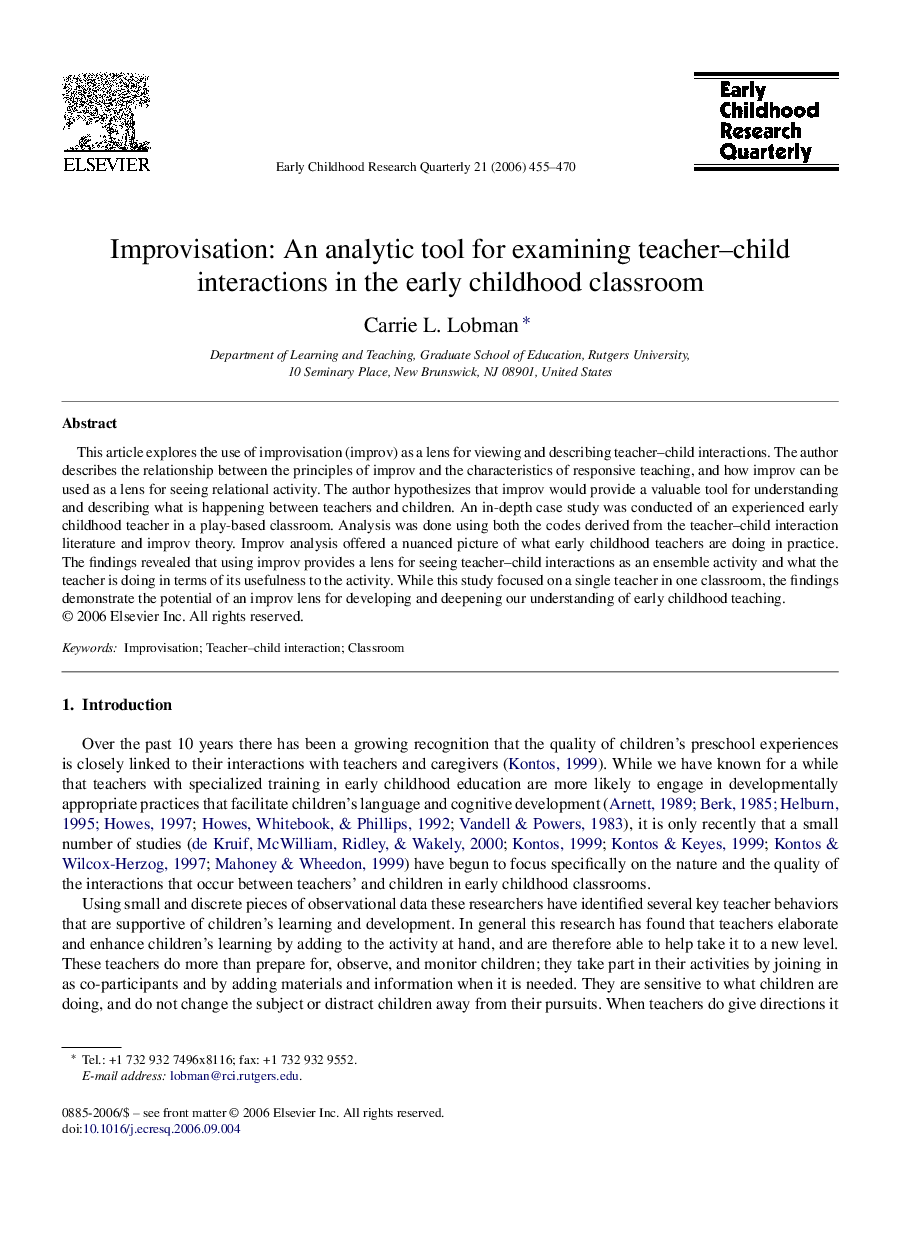| Article ID | Journal | Published Year | Pages | File Type |
|---|---|---|---|---|
| 354143 | Early Childhood Research Quarterly | 2006 | 16 Pages |
This article explores the use of improvisation (improv) as a lens for viewing and describing teacher–child interactions. The author describes the relationship between the principles of improv and the characteristics of responsive teaching, and how improv can be used as a lens for seeing relational activity. The author hypothesizes that improv would provide a valuable tool for understanding and describing what is happening between teachers and children. An in-depth case study was conducted of an experienced early childhood teacher in a play-based classroom. Analysis was done using both the codes derived from the teacher–child interaction literature and improv theory. Improv analysis offered a nuanced picture of what early childhood teachers are doing in practice. The findings revealed that using improv provides a lens for seeing teacher–child interactions as an ensemble activity and what the teacher is doing in terms of its usefulness to the activity. While this study focused on a single teacher in one classroom, the findings demonstrate the potential of an improv lens for developing and deepening our understanding of early childhood teaching.
